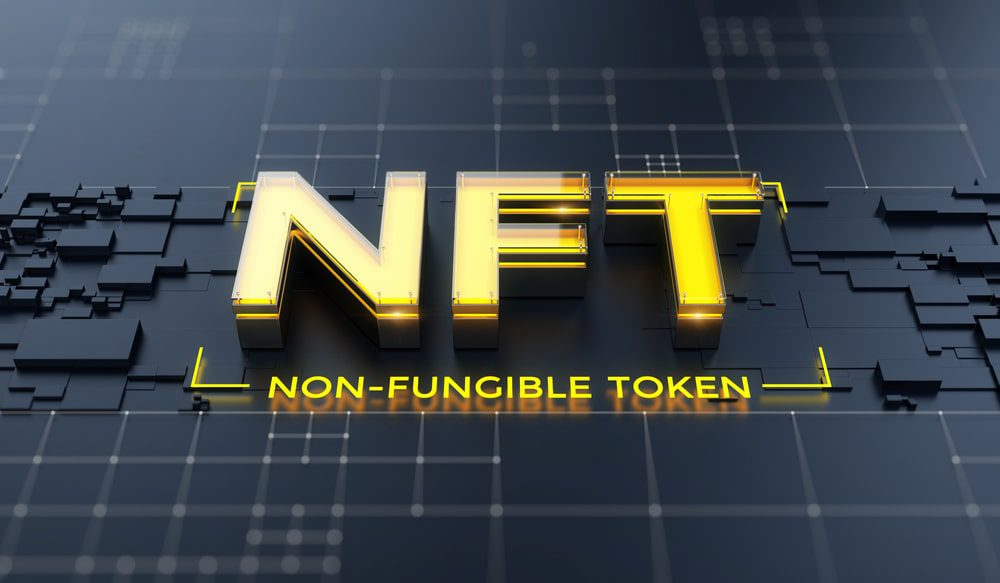Although the technology behind NFTs may be complex for most people, many platforms make it easy for anyone to create an NFT of anything you want.
NFT marketplaces like OpenSea don’t just cater to sales of the unique tokens, but also enable users to mint NFTs directly on the platform.
All you have to do is create an account and click on ‘Create’ to select the digital work you want to turn into an NFT. Once you have selected your chosen work, input the necessary details about the project and set your royalty figure.
Choose the blockchain you want to mint your NFT on. As an example, OpenSea supports Ethereum and layer-two protocol Polygon. Choose the number of NFTs you want to mint and click on ‘Create’ to conclude the steps.
How is an NFT Different from Cryptocurrency?
At the most basic level, NFTs are cryptocurrencies, but their utility is vastly different. Bitcoin and other altcoins are “fungible”.
Fungibility means that one BTC can be exchanged for another. As a result, no matter who sends or receives them, cryptocurrencies and much of the fiat currency we currently use have equal value.
This is not true of NFTs. One NFT cannot be directly interchanged with another. This is because NFTs are programmed with specific traits, order, and qualities.
An instance would be the recently released digital collectibles celebrating the life of now-deceased National Basketball Association (NBA) superstar Kobe Bryant.
Split across eight different collectibles; these NFTs highlight different parts of his once-promising career before his sudden demise in 2021. Each collectible is unique and shows a different aspect of the famous Mamba NBA star’s illustrious career on the basketball court.
Given these collectibles’ cultural significance, they sell for between $30 to over $20,000. This is expected to become more valuable as more collectors look to add the NFT to their lineup.
This is where NFTs distinguish themselves from their other blockchain-based assets. Aside from the fungibility narrative, the supply is another significant difference between NFTs and other digital assets.
A limited collection of an NBA Top Shot in-moment video of a dunk means that only a few users will own that video. This increases their value due to their unique qualities and traits and the exclusivity they provide. On the other hand, cryptocurrencies like Ethereum do not have a limit on their total amount.
The most common ceiling for NFTs is 10,000, meaning only about 10,000 wallet addresses would ever hold a specific NFT project. Because supply is limited, demand is bound to outnumber supply, resulting in the high value that popular NFT projects command.
EVERYDAYS: THE FIRST 5000 DAYS, a piece by a digital artist popularly known as Beeple, is a classic and recent NFT success story. The NFT, which depicted a 5000-day journey over a half-decade, sold for $69.3 million, making it the third most-valuable work of art created by a living artist.
Another area of distinction is in their use cases.
While cryptocurrencies are primarily concerned with the financial aspects of blockchain technology, NFTs go a step further.
For example, it demonstrates digital asset ownership. Making it simple for people to mint personal assets as NFTs and store them on the blockchain. Unless they transfer it to another individual, the asset becomes immutable and linked to their wallet address and identity. They can also be used to represent in-game items like wearables and to represent ownership of physical assets.
NFTs are seeing even more use cases than other cryptocurrencies, as they are used in the educational sector to confirm certificate ownership, in real estate to do the same thing, in healthcare for seamless patient record keeping, and a variety of other spaces.
Should You Buy NFTs?
NFTs have gained utility and have evolved into a form of identity and a cultural statement. Celebrities purchase NFTs to represent their personality and belief system. Top personalities include Eminem, Steph Curry, and others posting display pictures of indifferent-looking Ape NFTs, also known as Bored Ape or BAYC.
Despite their popularity, the success of an NFT is largely subjective. To begin with, NFTs are community-oriented.
This means if no strong community engagement is pushing it, the digital collectible could become worthless in no time. NFTs are also based on how much a buyer perceives their value to be. By this, a high-valued NFT artwork can go for a lesser value if the seller believes it is no longer worth the initial purchase price. While crypto assets like Bitcoin have intrinsic value storage capabilities, NFTs are only valuable if they appeal to the right audience.
Another detail to consider is its relative novelty. Unlike crypto stalwarts like Bitcoin, NFTs are still in their infancy as they only broke into the spotlight in 2021, even though the first NFT (CryptoKitties) launched in 2017. This makes it difficult to track its long-term performance. This makes it a risky investment option for users who do not have a strong financial base.
There have also been cases of stolen NFTs. Customers have lost over $90m to online NFT scams. One investor lost 16 high-end collectibles in 2021 worth $2.1m, according to data from blockchain analytics firm Elliptic. Since crypto is not regulated in several regions, recovering lost NFTs is nearly impossible.
The sector is also battling copyright infringements. There have been claims by real-world artists that their works were tokenized without their consent. This is debatable and hard to verify, given that the individual that mints the NFT first is deemed as the creator on the blockchain network. This has enabled thieves to tokenize and claim ownership of other people’s works.
Nonetheless, NFTs are regarded as a disruptive force, reshaping the worlds of art, gaming, music, and entertainment in general. If you are looking to buy one, we recommend conducting the necessary research on the creators and whether it fits your belief system.
What is the future for NFTs?
NFTs started 2021 at a paltry sales figure of only $10 million. However, by the end of the year, the nascent sub-sector had grown 10x that figure with over $10 billion in NFT sales recorded.
Advocates who have pointed out that NFTs have the potential to transform the creative industry may be right in saying so, given the number of public figures that own NFTs or are in the NFT business now.
The influx of deep-pocketed investors has seen a lot of retail investors ostracized from the NFT ecosystem. However, the tide is expected to shift as more industries embrace the unique tokens.
Given this, NFTs are expected to become a new way of expression and a more digitized way of connecting with the world around us. Advocates have pointed out that NFTs are still in their infancy. This gives room for more growth as adoption picks up.
Credit: Source link



 Bitcoin
Bitcoin  Ethereum
Ethereum  XRP
XRP  Tether
Tether  Solana
Solana  USDC
USDC  Lido Staked Ether
Lido Staked Ether  Dogecoin
Dogecoin  TRON
TRON  Cardano
Cardano  Wrapped stETH
Wrapped stETH  Wrapped Bitcoin
Wrapped Bitcoin  Chainlink
Chainlink  Ethena USDe
Ethena USDe  Hyperliquid
Hyperliquid  Sui
Sui  Figure Heloc
Figure Heloc  Avalanche
Avalanche  Stellar
Stellar  Wrapped eETH
Wrapped eETH  Bitcoin Cash
Bitcoin Cash  WETH
WETH  Hedera
Hedera  Litecoin
Litecoin  LEO Token
LEO Token  Binance Bridged USDT (BNB Smart Chain)
Binance Bridged USDT (BNB Smart Chain)  USDS
USDS  Coinbase Wrapped BTC
Coinbase Wrapped BTC  Shiba Inu
Shiba Inu  Cronos
Cronos  Toncoin
Toncoin  USDT0
USDT0  Mantle
Mantle  Polkadot
Polkadot  WhiteBIT Coin
WhiteBIT Coin  Monero
Monero  Ethena Staked USDe
Ethena Staked USDe  World Liberty Financial
World Liberty Financial  Uniswap
Uniswap  OKB
OKB  Dai
Dai  Aave
Aave  Pepe
Pepe  Ethena
Ethena  Bitget Token
Bitget Token  Aptos
Aptos  NEAR Protocol
NEAR Protocol  MemeCore
MemeCore